
Goodbye, XPS 15 and XPS 17. It was nice knowing ya.
Just in time for 2024 and CES about to hit, Dell has unveiled a massive change to its XPS line of laptops, which involves swapping out the XPS 15 and 17 with a new XPS 14 and 16 while also completely redesigning the laptops around the divisive features straight from the (now defunct) XPS 13 Plus.
I can certainly respect the bold new direction, even if some design decisions feel downright impractical. One thing’s for sure: Having played with these flashy laptops in person, I can safely say that they’re certainly some of the most eye-catching laptops I’ve ever seen.
The XPS 14 and XPS 16 join the party
So, why the new sizes? Well, Dell is actually one of the last companies to change to 14-inch and 16-inch sizes, now matching what Apple, Lenovo, Asus, and almost everyone already has. The benefit is obvious – smaller, more compact laptops, often with similar specs. The XPS 14 is still 0.71 inches thick but is considerably smaller and lighter than the XPS 15 used to be.
The difference between the XPS 16 and 17 is even more dramatic, cutting weight, thickness, and overall footprint by a good amount. They’re all under 5 pounds now, which is a good thing.
As we’ll see in the performance section, the XPS 14 and 16 may not be an exact one-to-one swap with the XPS 15 and 17.

But there’s a lot more going on here than just new sizes. The XPS 14 and XPS 16 embrace the forward-looking and divisive elements of the previous XPS 13 Plus, mainstreaming them across the entire lineup. When the XPS 13 Plus came out in 2022, it was controversial. That’s putting it lightly.
Dell seemed to defy conventional thinking at nearly every design decision. But it was easy to write off at the time, especially since it felt like just an experimental product, keeping the more practical XPS 13, XPS 15, and XPS 17 around for good measure. But with the lineup, there’s no longer a “safe” choice. In fact, the XPS 13 2-in-1 and XPS 13 Plus have also been removed from the lineup altogether — at least on the surface. The new XPS 13 is almost identical to the old XPS 13 Plus, meaning the simpler base XPS 13 (9315) has been nixed.
| Dell XPS 13 (9340) | Dell XPS 14 | Dell XPS 16 | |
| Dimensions | 11.62 x 7.84 x 0.58 inches | 12.60 x 8.50 x 0.71 inches | 14.10 x 9.40 x 0.74 inches |
| Weight | 2.58 pounds | 3.7 pounds | 4.7 pounds |
| Processor | Core Ultra 5 125H Core Ultra 7 155H Core Ultra 7 165H |
Core Ultra 7 155H Core Ultra 7 165H |
Core Ultra 7 155H Core Ultra 7 165H Core Ultra 8 185H |
| Graphics | Intel Arc graphics | Intel Arc graphics Nvidia RTX 4050 |
Intel Arc graphics Nvidia RTX 4050 Nvidia RTX 4060 Nvidia RTX 4060 |
| Memory | 8GB, 16GB, 32GB, 64GB of dual-channel RAM | 16GB, 32GB, 64GB of dual-channel RAM | 16GB, 32GB, 64GB of dual-channel RAM |
| Storage | 512GB, 1TB, 2TB, 4TB of PCIe 4 SSD | 512GB, 1TB, 2TB, 4TB of PCIe 4 SSD | 512GB, 1TB, 2TB, 4TB of PCIe 4 SSD |
| Display | 13.4-inch 1920 x 1200 120Hz 13.4-inch 2560 x 1600 120Hz 13.4-inch 2880 x 1800 60Hz OLED touch |
14.5-inch 1920 x 1200 120Hz 14.5-inch 3200 x 2000 120Hz OLED touch |
16.3-inch 1920 x 1200 120Hz 16.3-inch 3840 x 2400 90Hz OLED touch |
| Webcam | 1080p | 1080p | 1080p |
| Battery | 55 watt-hour | 69.5 watt-hour | 99.5 watt-hour |
| Ports | 2x Thunderbolt 4 ports with DisplayPort 2.1 and power delivery | 3x Thunderbolt 4 ports with DisplayPort 2.1 and power delivery 1x headphone jack 1x microSD card reader |
3x Thunderbolt 4 ports with DisplayPort 2.1 and power delivery 1x headphone jack 1x microSD card reader |
| Price | Starts at $1,300 | Starts at $1,700 | Starts at $1,900 |
So, what are these dangerous design choices I’m referring to? Well, for one, the XPS 14 and 16 now have the invisible haptic feedback trackpad stretching across the palm rests, and they look as beautiful as ever. That does mean the grippy polycarbonate palm rests have been traded out with a more standard aluminum, still coming in the two colors: granite and platinum.
More controversially, these new laptops also don’t have a physical function row of keys, replacing them with the glowing touch keys featured on last year’s XPS 13 Plus. This time around you can change their brightness at least so they don’t completely blind you in the dark, but they still function in the same way.
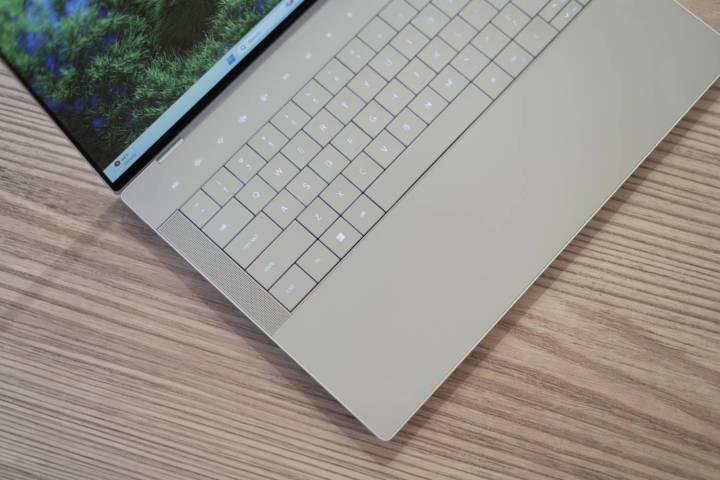
I don’t mind the touch buttons, but they may present a larger problem on these bigger models, which are definitely more oriented toward a “Pro” audience. These are people who likely use function keys a lot more than the average person. I can imagine a programmer, for example, being quite frustrated with this keyboard, in the same way they were with the Touch Bar on the old MacBook Pros.
Now, don’t get me wrong – there’s definitely some good in this redesign too. I love how the edge-to-edge keyboard looks and how the spacing of these extra-large keycaps feels. The seamless haptic trackpad really does look futuristic, too, even today, and the XPS 14 and 16 are more compact than last year’s models, obviously due to the smaller screens. These edgy laptops are certainly pushing the envelope of what people are comfortable with.
Displays
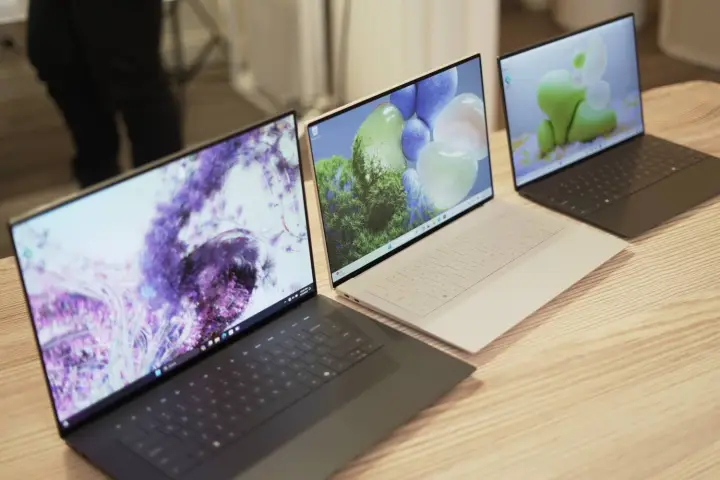
Another big upgrade this year is the option for higher refresh rate panels. Specifically, the XPS 14 has a 3200 x 2000 resolution OLED option, which is a touch panel with a 120Hz refresh rate. The XPS 16 has a full 4K OLED screen, but the refresh rate is only 90Hz.
Both sound like great panel options, and I’m really happy Dell is offering some higher refresh rates, especially for those who might want to game on the side with these devices.
However, I’d still like to have seen mini-LED offered as an option because of the HDR performance. To really compete with a MacBook Pro, I’d want to see some comparable brightness that OLED laptops right now just can’t produce. In fact, the cheaper IPS display options are brighter at 500 nits in SDR, while the OLED panels max out at 400 nits.
The display options for the XPS 13 have been slightly tweaked, now offering a QHD IPS panel going up to 120Hz while the OLED panel is still stuck at 60. Still, this is the first time the XPS 13 will have a faster 120Hz refresh rate on offer — and the best part is that even the starting configuration comes with it. This move to 120Hz as a new standard follows suit with what Dell is bringing to its new UltraSharp monitors this year, too.
Cameras and speakers
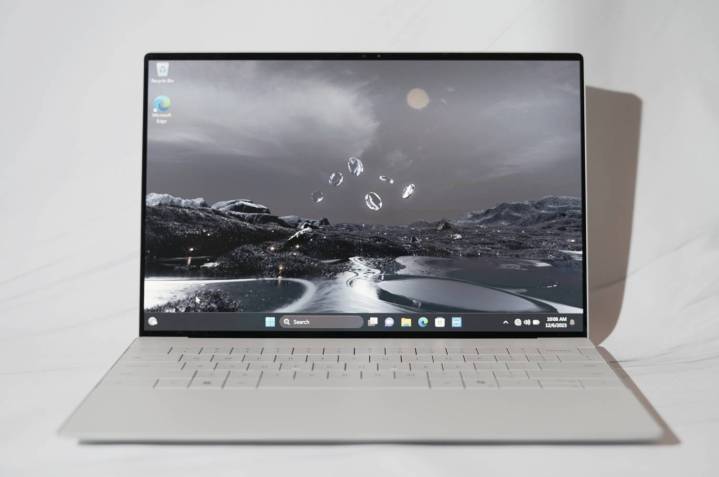
A camera upgrade is one of the changes coming to all three new XPS laptops. They’ve all been bumped from 720p to 1080p, and without growing the thickness of that top bezel (at least not from what I could tell). This has been an ongoing journey for the designers at Dell, which kicked off the campaign to shrink display bezels way back in 2017. Since then, however, high-quality webcams have become important again, leaving the XPS in a tight spot, lagging in webcam quality.
The XPS 14 and 16 speakers still use a quad-speaker setup, with some larger, upward-firing tweeters on the keyboard deck. Much of the XPS 14 and 16 competition has moved to a six-speaker system, whether the MacBook Pro or the Razer Blade. I wasn’t able to test the speakers out much at the noisy preview event, but I’ll certainly be curious to hear how they compare to last year’s models.
The XPS 13 also has four speakers, though the upward-firing ones are under the keyboard.
Performance
The XPS 13, XPS 14, and XPS 16 will all offer various configurations of the new Intel Core Ultra Meteor Lake chips. The XPS 14 goes up to a Core Ultra 7 165H chip alongside an RTX 4050, while the XPS 16 goes up to a Core Ultra 9 185H with an RTX 4070. Those make solid comparisons to the MacBook Pro in performance, though putting something as powerful as the M3 Max in a 14-inch chassis is still something Windows laptops don’t have the efficiency to accomplish.
It also should be noted that the XPS 15 used to offer up to a Core i9 and an RTX 4070, while the XPS 17 could be configured with up to an RTX 4080. In sizing down its laptop line, Dell will no longer have a top-of-the-line laptop that offers an RTX 4080. We’ll have to wait for our own testing to see how that affects overall performance, but it certainly feels like a downgrade on the graphics front.
The XPS 13 has no discrete graphics option, starting with a Core Ultra 5 125H and topping out at the Core Ultra 7 165H. Interestingly, the XPS 13 and XPS 14 can be configured with nearly identical processors, which was not possible with last year’s XPS 13 and XPS 15.
Dell has always been good about offering a wide variety of configurations; however, here, you’ll still be able to scale these machines up to 64GB of RAM and 4TB of storage if you really want it. The 8TB storage option seems to be gone for now, however.
Speaking of RAM, it’s nice to see Dell move to all dual-channel memory, something companies like Razer have been doing for a while now.
Ports
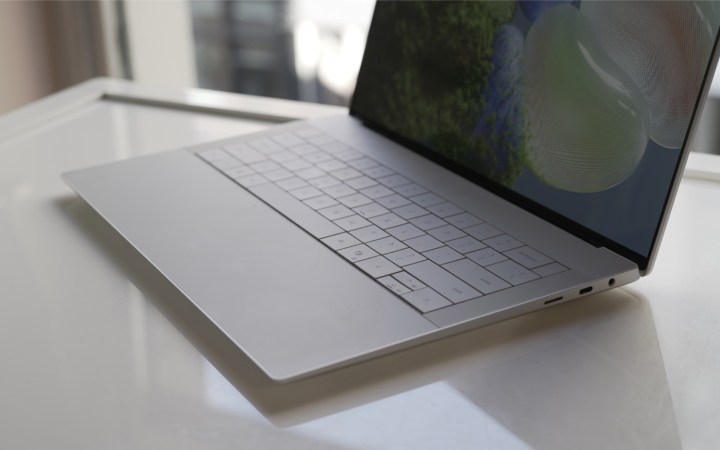
Ports have been a point of controversy for years in the XPS ecosystem. The move to only Thunderbolt ports back in the day to match what Apple did with the MacBooks was certainly a point of contention at the time. Bringing the full-size SD card slot into the mix a few years ago was a great move, but now that’s being muddied in this new generation.
The XPS 14 and XPS 16 both have fairly limited port selection, offering just three Thunderbolt 4 ports, a headphone jack, and a micro-SD card slot. You heard that right. The micro-SD card slot has replaced the full-size option, which means a severe interruption to the workflow of a photographer or videographer. If your workflow involves loading files directly from a camera, that’ll likely be a frustrating change, and you already don’t have HDMI or USB-A, so one less dongle goes a long way.
The XPS 13 has even fewer ports, with just two Thunderbolt 4 ports and no headphone jack. I’m a little surprised that this isn’t an area where Dell listened to the negative feedback around removing the headphone jack with the XPS 13 Plus, but maybe I’m overestimating how much people really want an analog audio jack on their laptops. I know I’d prefer to keep mine around, that’s for sure.
Pricing and availability
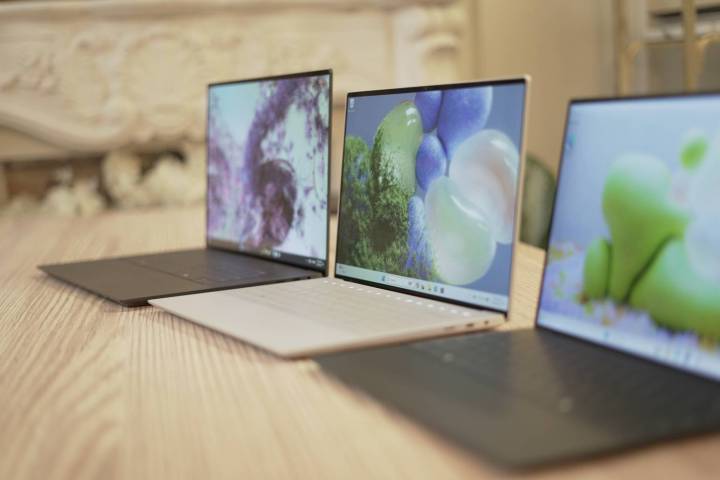
The new XPS 13 matches the price of last year’s XPS 13 Plus, starting at $1,300. That’ll get you 8GB of RAM and 512GB of storage.
I’m a bit let down that the affordable XPS 13 (9315) has been cut, especially since it offered such a compelling alternative to the MacBook Air at the time. To me, the $850 start price represented an admission that there were some things, like battery life, that Windows laptops haven’t been able to compete with. But now, the XPS 13 will need to go head-to-head with the M2 MacBook Air, which is identical in price when similarly configured. On the other hand, Dell won’t have an answer for the $999 M1 MacBook Air that’s still being sold — unless it continues to sell older versions of its laptops.
On the other hand, the XPS 14 starts at $1,700, with 16GB of RAM, 512GB of storage, and integrated Intel Arc graphics. That undercuts the M3 MacBook Pro by $100 when similarly configured, though Apple sells a cheaper version with just 8GB of RAM.
Lastly, the XPS 16 will start at a lower $1,900, which is $300 cheaper than what the XPS 17 started at. The reason is that the base configuration doesn’t come with discrete graphics. Otherwise, it comes with 16GB of RAM and 512GB of storage.
All three laptops will be available sometime within the first quarter of 2024.



